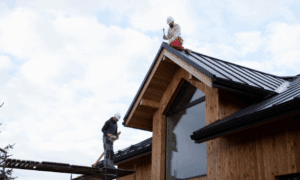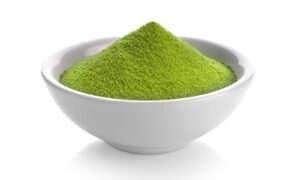Driveways across Canada take a beating every winter. Between freezing temperatures, snow, road salt, and constant thaw-freeze cycles, unprotected concrete often shows signs of damage by springtime. Cracks, pitting, and surface scaling are common, and once these issues set in, they only get worse with each passing year. Homeowners who want to preserve their driveway’s durability and curb appeal often turn to Long-Lasting Concrete Sealing as a proactive solution.
Let’s break down why sealing your driveway is not just a cosmetic upgrade but a critical line of defence against the realities of Canadian winters.
The Freeze-Thaw Cycle and Why It Wrecks Concrete
Concrete is porous. That means moisture seeps in whenever rain or melted snow lands on the surface. During cold months, that trapped water freezes and expands, putting enormous pressure on the concrete. When it thaws, the material contracts. Repeat this cycle hundreds of times each winter, and the result is cracks, chips, and a surface that begins to crumble.
A proper sealant fills those pores, creating a barrier that reduces water absorption. By limiting how much moisture gets inside, sealing helps concrete resist the destructive forces of expansion and contraction.
Road Salt and De-Icing Chemicals: Silent Destroyers
Most Canadian households rely on road salt or de-icing agents to keep driveways safe. Unfortunately, these chemicals don’t just melt ice; they penetrate concrete, accelerate corrosion of any embedded rebar, and cause surface flaking.
Sealing your driveway adds a protective layer that shields the surface from these chemicals. It prevents salts from being absorbed deeply, meaning you’ll deal with less scaling and surface deterioration come spring.
Preventing Cracks Before They Spread
Once a crack appears in your driveway, it’s more than just a minor eyesore. Water infiltrates the crack, freezes, and expands, widening it every time. Small hairline fractures can quickly turn into large gaps or even potholes.
A quality sealing job doesn’t just guard against new cracks—it also helps stabilize existing ones by keeping moisture out. That means less patchwork and fewer costly repairs down the road.
Enhancing Durability in Extreme Temperature Swings
Canadian weather doesn’t just get cold; it swings from sub-zero mornings to above-freezing afternoons, sometimes in a single day. Concrete left unsealed struggles to cope with this constant fluctuation, making it brittle over time.
By applying a sealant, the concrete surface gains flexibility. It can better withstand those rapid temperature shifts without losing its structural integrity, which is critical for driveways expected to endure daily vehicle loads.
Boosting Curb Appeal Through Protection
Sealed concrete doesn’t just last longer—it looks better too. A protective seal enhances the natural colour of the concrete, giving it a fresh, clean finish that resists stains from oil, grease, and melted snow runoff.
Homeowners often notice that their driveway maintains a newer appearance for years, even under the pressure of winter elements. It’s a small step that makes a noticeable difference in the overall presentation of your property.
Saving Money on Long-Term Maintenance
The upfront cost of sealing may make some homeowners hesitate, but the financial logic is straightforward. Unsealed driveways typically need patching, resurfacing, or even full replacement much sooner. Each of these repairs can cost thousands of dollars.
By investing in sealing, you extend the lifespan of your driveway and cut back on frequent fixes. It’s not just preventative—it’s a money-saving measure that adds real value over time.
Eco-Friendly Perks of Sealing
Driveway deterioration doesn’t just affect your property—it also impacts the environment. Flaking concrete and chemical runoff can contribute to pollution in surrounding soil and waterways.
Sealing reduces both issues. It lowers the amount of de-icing salt absorbed into the ground and cuts down on concrete dust and debris that end up in storm drains. For eco-conscious homeowners, that’s a meaningful advantage.
Timing Matters: When to Seal for Best Results
Sealing is most effective when done at the right time. In Canada, early fall is often ideal because the weather is dry and temperatures are moderate, giving the sealant time to cure before the first frost.
Skipping sealing or applying it too late in the season leaves your driveway exposed just as winter damage is at its peak. Planning ahead ensures maximum protection.
Extending the Life of Outdoor Surfaces Beyond Driveways
While driveways face some of the harshest punishment, patios, walkways, and garage floors also benefit from sealing. The same freeze-thaw cycles and salt exposure affect every outdoor concrete surface.
Protecting these areas with sealing keeps your entire property looking maintained and structurally sound, avoiding the piecemeal look of patched or degraded surfaces.
Final Thoughts: Protecting Your Driveway for the Long Haul
Canadian winters aren’t going anywhere, and your driveway will always be on the front line of the battle against ice, salt, and shifting temperatures. Sealing offers a straightforward way to fight back. It strengthens the surface, keeps moisture and chemicals out, and preserves both appearance and function for years.
Think of sealing as insurance for your driveway—one that pays off in durability, fewer repairs, and long-term savings. If you want your concrete to withstand the extremes of winter while maintaining its curb appeal, sealing is not just recommended—it’s essential.

































